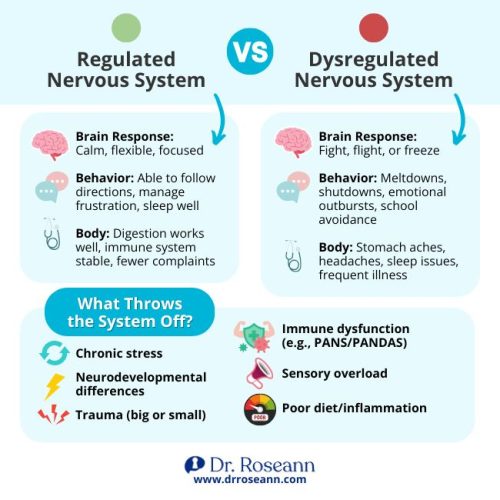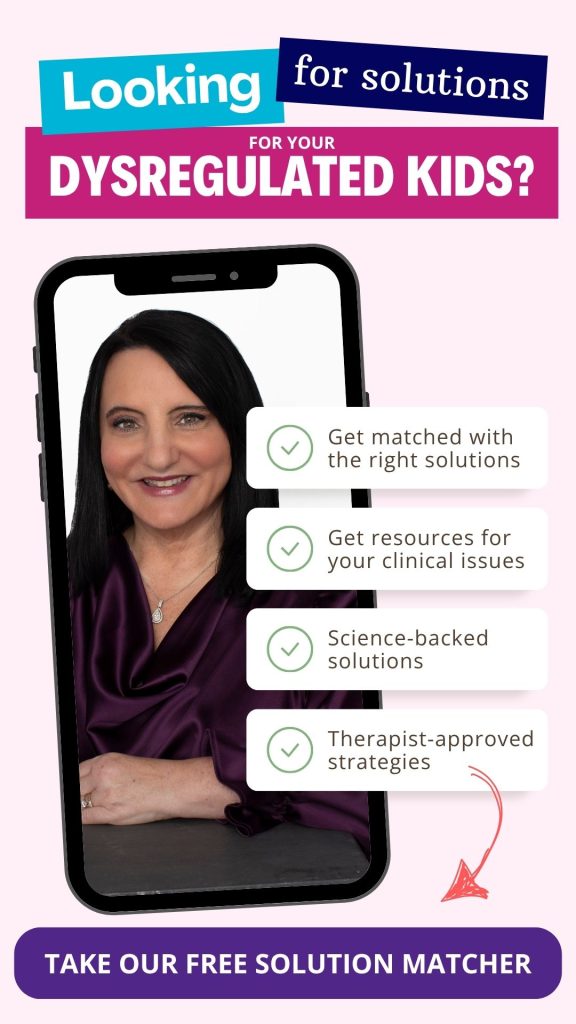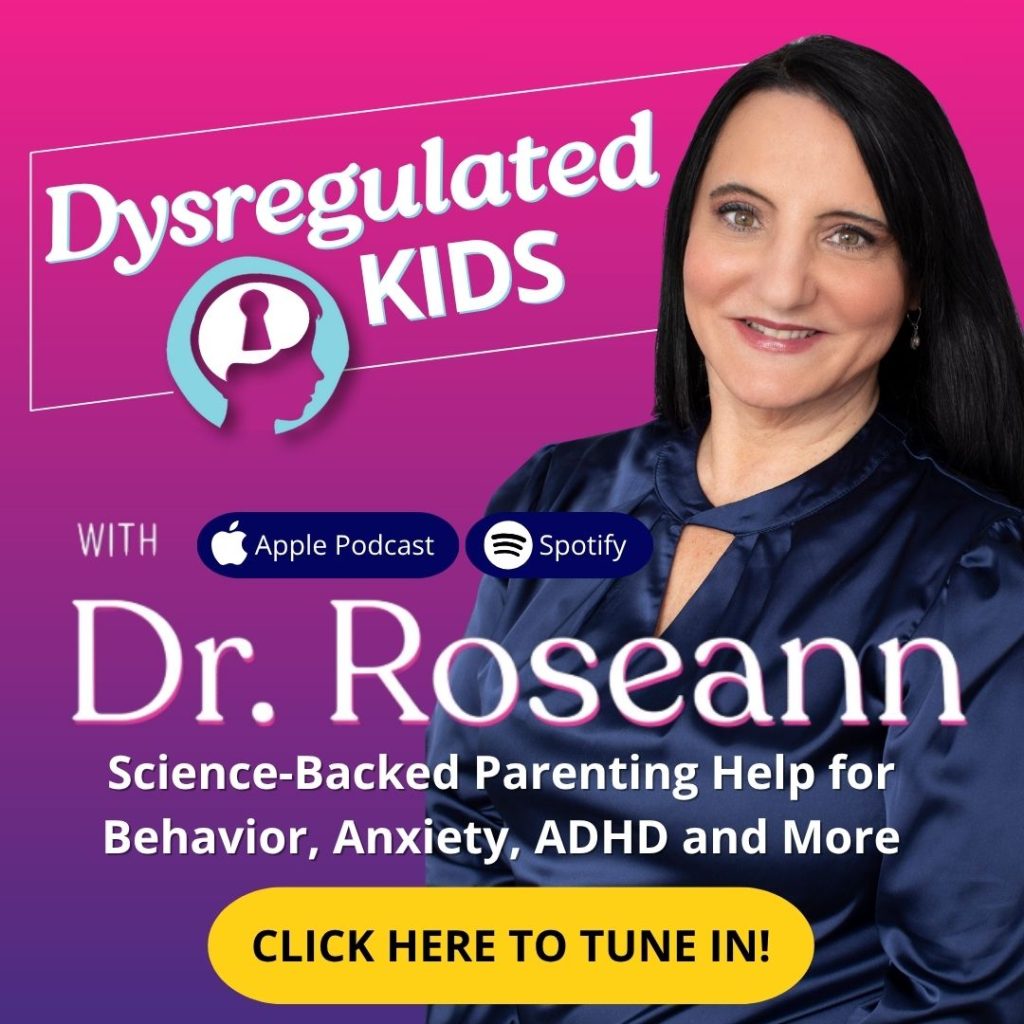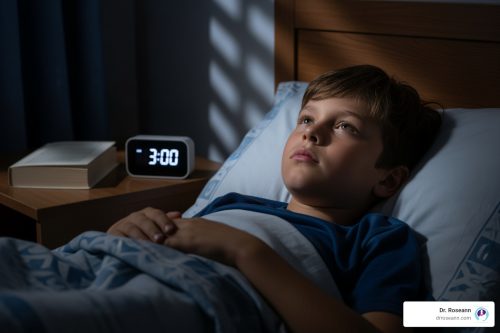Estimated reading time: 8 minutes
If your child seems “off” with stomachaches, sleep issues, or big meltdowns, you’re not imagining it. These are signs their nervous system is overwhelmed—and that’s exactly where healing begins.
Why Does the Nervous System Get Dysregulated?
Your child’s nervous system is built to keep them safe—but sometimes it gets stuck in overdrive. When that happens, their brain starts sounding alarms over everything, even when there’s no real danger in sight.
Ever seen your child totally melt down over something tiny or freeze up during homework? That’s not misbehavior—it’s survival mode kicking in.
Their brain’s doing its best to protect them, but it’s reacting like there’s a fire… when really, someone just burned the toast.
So what throws the nervous system out of balance in the first place?
It’s usually not one big thing. It’s layers—stress, wiring, inflammation—that pile up until the system just can’t reset on its own (Elbers et al., 2018).

Common Triggers I See Every Day:
- Chronic stress or anxiety
- Neurodevelopmental differences
- Trauma
- Immune issues, especially in kids with PANS/PANDAS
- Sensory overload
- Poor nutrition or brain inflammation
When the brain’s inflamed or stuck in overdrive, it doesn’t just affect mood or focus—it shows up physically too. That’s why tuning into these symptoms matters so much.
What Are the Physical Symptoms of a Dysregulated Nervous System?
When your child’s nervous system flips into survival mode, their body often starts yelling before their words ever catch up. These signs are easy to miss—or easy to dismiss—but they’re your child’s way of saying, “I’m not okay.”
And let me tell you, it’s not about being dramatic. It’s about a brain that’s stuck in overdrive and a body doing its best to keep up.

Common Physical Symptoms in Kids:
- Chronic fatigue or bursts of hyperactivity
- Headaches or facial tension
- Stomachaches or irregular digestion
- Racing heart or chest tightness
- Trouble falling asleep or staying asleep
- Frequent illness or weak immunity
- Tense muscles or constant fidgeting
- Sensory overload from light noise textures or smells
- Bedwetting or frequent urination
- Low pain tolerance or ongoing discomfort
Easy-to-Miss Red Flags:
- “I don’t feel good,” but no fever
- Drained after school despite sleeping well
- Always on edge or overreacts to small things
And when you start recognizing these signs for what they really are? That’s when things begin to shift.
How Can I Tell If My Child’s Physical Symptoms Are From Nervous System Dysregulation?
This is one of the most common questions I hear from parents. “They keep getting stomachaches… Is it stress? Are they just trying to get out of school?”
Here’s how you can start to connect the dots.
Look for Patterns Like These:
- Symptoms flare up during stress—before school, after social events, during transitions
- Medical tests come back “normal” but your child still doesn’t feel well
- Complaints about their body come with mood swings or sudden behavior changes
Rule of Thumb: If your child’s body is often in distress—but doctors can’t find a clear reason—it’s time to look at the nervous system.
Because when the brain feels unsafe, the body reacts loud and clear. That’s not drama—it’s dysregulation.
When Should I Worry About My Child’s Physical Symptoms?
If your child’s symptoms are…
- Getting in the way of school or daily life
- Showing up again and again with no clear medical reason
- Tied to mood swings, meltdowns, or shutdowns
…it’s time to take a closer look.
You’re not overreacting. You’re tuning into your child’s nervous system—and that’s exactly what they need you to do.
How Long Does It Take to Heal a Dysregulated Nervous System?
There’s no one-size-fits-all timeline—but yes, healing is absolutely possible. Even for kids who’ve been stuck in fight, flight, or freeze for years.
What Affects How Long Healing Takes:
1. How long the nervous system’s been dysregulated
The longer it’s been stuck, the more time the brain might need to reset.
2. What’s driving the dysregulation
Things like infections (PANS/PANDAS), trauma, inflammation, or sensory overload can all make healing slower.
3. How consistent the support is
The nervous system doesn’t heal overnight. It needs steady, brain-calming tools—not a quick fix.
What You Might Notice:
- Some kids respond within weeks, especially when you combine:
- Neurofeedback
- Nutrition
- Nervous system retraining (like breathwork or biofeedback)
- Other kids need more time—months or longer— particularly when:
- Immune issues are involved
- There’s a trauma history
- The brain stays inflamed or stuck in high-alert mode
Here’s what I want you to remember: Healing begins when we calm the brain. Once the nervous system feels safe, everything else starts to shift—behavior, sleep, mood, digestion… all of it.
What Helps Calm a Dysregulated Nervous System?
When your child’s nervous system is out of balance, the main goal is to help them feel safe—inside and out. Because when the brain feels safe, regulation follows.
Here are some of the top science-backed tools I use every day with kids in my practice:
1. Neurofeedback
Think of it like physical therapy for the brain. It teaches self-regulation and helps your child move out of survival mode (Abdian et al., 2021), so they can pause and choose instead of react and explode.
2. Biofeedback
This one’s all about awareness. Kids learn how their body reacts under stress—and how they can dial it down in real time using tools like breath and muscle relaxation.
3. Breathwork
Breathing might sound too simple, right? But when done right, it stimulates the vagus nerve and pulls the body out of fight-or-flight faster than you’d think.
4. Nutrition
Food fuels the brain. Cutting back on sugar, dyes, and processed foods can reduce inflammation and improve mood and focus.
5. Supplements (like magnesium and omega-3s)
Support nervous system regulation and help calm an overactive brain.
6. Routine and Co-Regulation
Predictability builds safety. And when your nervous system stays calm, theirs starts syncing up with yours.
That’s the power of co-regulation.
Calm doesn’t start with consequences. It starts with connection and a regulated brain.
Parent Action Steps:
FAQ's
Why does my child seem fine one moment and then suddenly crash?
Dysregulated kids often burn through their energy trying to “hold it together.” Once they hit their limit, the nervous system crashes into shutdown or meltdown mode. It’s not inconsistency—it’s exhaustion. Their system simply can’t keep up.
Why do these symptoms show up even when medical tests look normal?
Because it’s not always a medical issue—it’s neurological. When the nervous system stays in fight, flight, or freeze, the body takes the hit.
Your child might “look fine” on paper but still feel awful. That’s why regulation—not just diagnosis—is key.
Will these physical symptoms go away with nervous system support?
Yes, with the right support, many kids see real improvement. When you calm the brain, the body can finally shift out of survival mode. Tools like neurofeedback, nutrition, and co-regulation make a powerful difference over time.
Citations
Abdian, H., Rezaei, M., Eskandari, Z., Ramezani, S., Pirzeh, R., & Dadashi, M. (2021). The Effect of Quantitative Electroencephalography-Based Neurofeedback Therapy on Anxiety, Depression, and Emotion Regulation in People with Generalized Anxiety Disorder. Basic and clinical neuroscience, 12(2), 281–290. https://doi.org/10.32598/bcn.12.2.2378.1
Elbers, J., Jaradeh, S., Yeh, A. M., & Golianu, B. (2018). Wired for Threat: Clinical features of nervous system dysregulation in 80 children. Pediatric Neurology, 89, 39–48. https://doi.org/10.1016/j.pediatrneurol.2018.07.007
Dr. Roseann is a mental health expert in Self-Regulation who frequently is in the media:
- Healthline Understanding Self-Regulation Skills
- Scary Mommy What Is Self-Regulation In Children, And How Can You Help Improve It?
- HomeschoolOT Therapy Services Understanding Nervous System Dysregulation in Children: A Guide for Homeschool Parents
Always remember… “Calm Brain, Happy Family™”
Disclaimer: This article is not intended to give health advice and it is recommended to consult with a physician before beginning any new wellness regime. *The effectiveness of diagnosis and treatment vary by patient and condition. Dr. Roseann Capanna-Hodge, LLC does not guarantee certain results.
Are you looking for SOLUTIONS for your struggling child or teen?
Dr. Roseann and her team are all about solutions, so you are in the right place!










